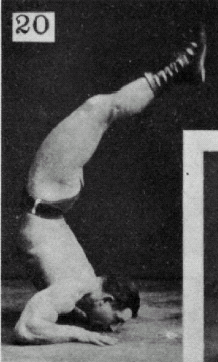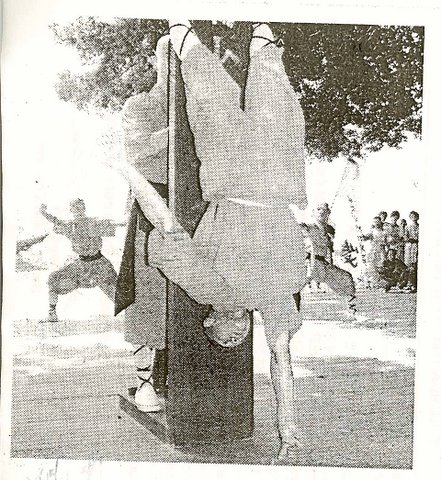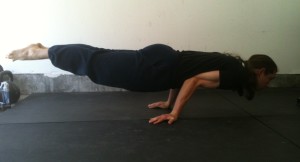Professor E.M. Orlick. You’ve probably read the last few post about him and have wondered why his material is so great.
Here is an excerpt from Handbalancing Made Easy, which forms just one of many pieces of the new course coming out soon. This covers many of the benefits of hand balancing no matter your reasons for doing it.
“I honestly believe that handbalancing is one of the finest mind-body activities there is, and that everyone should learn something about this invigorating sport. I am also convinced that our national health, both mental and physical, would improve materially, if all of our people spent a little time each day in the stimulating upside-down position.
FOR THE GYMNAST, the ability to hold a perfect handstand is a must. This stunt, with its numerous variations, is used more often in gymnastics than any other trick known to man. Without it, you cannot become a champion gymnast, or even an accomplished performer.
FOR THE ACROBAT, whether amateur or professional, the handstand is of similar importance, because it can be used in such a great variety of ways and in such a multitude of different acts. The handstand belongs in the repertoire of every good acrobat.
FOR THE BODYBUILDER, and all others interested in building impressive, muscular, he-man physiques, the handstand is a natural. Not only does handbalancing help to build big, powerful muscles, but it also shows off the well-developed body to its best advantage. Furthermore, it proves to the whole world that your muscles are not a lot of useless bulk, because handbalancing requires a find combination of balance, controlled strength, and neuro-muscular coordination.
FOR THE WEIGHTLIFTER, and other strength athletes, the handstand serves a similar purpose, but does even more, for it helps to develop terrific pressing strength. All good handbalancers possess powerful triceps. I have yet to find one who could not press his own body weight over his head. Some can press much more, even though they have never practiced weight-lifting. Most handbalancers practice some weight-lifting to help them with their sport, and likewise, many weight-lifters do some handbalancing to help them improve their lifts.
FOR THE ATHLETE, no matter what his favorite sport may be, handbalancing is a wonderful, exhilarating, strength-building activity. It is particularly good for those sports which require strong fingers, wrists, forearms, upper arms, shoulders, upper back and lower back. However, it exercises all of the muscles of the body to some degree, is a good circulation stimulator, and a fine warm-up exercise.
FOR THE ORDINARY PERSON, who just wants a strong, healthy, useful body, which can serve him efficiently and enable him to enjoy a happy, exciting life, handbalancing is just the thing. Handbalancing brings into play every muscle in your body and has a beneficial effect upon all of your vital organs and systems. It improves circulation, respiration, digestion, elimination, and other important functions. It aids thinking and reasoning by bringing more blood to your brain, and more oxygen to your blood. It is challenging and exciting and has a beneficial effect upon the central nervous system as a whole. There is no better way to get fit and stay fit…mentally and physically… than through handbalancing.
HANDBALANCING is more than a series of stunts, more than a system of exercising, it is a way of life. To be a good handbalancer you need a sound mind in a sound body. You need strength of character, will-power, self-confidence, determination, perseverance, and the will to succeed. You need a mind free from worry, fear, and tension. You need a medically fit body, that is free from disease, injury, or infection. You need good balance, fine coordination and rapid recuperative powers. You need strength, stamina, and endurance; you need vim, vigor and vitality. You need mental and physical fitness of the highest order.”
As you can see Prof. Orlick was a huge believer that anyone and everyone can benefit from doing some hand balancing.
P.S. Why does it seem like all the best teachers of hand balancing seem to be professors or doctors? Maybe I should go get a degree.
If you are still unsure, why not just follow our lead and get your hand balancing skills in order.
We’ll even help you out by giving you a 50% discount til the end of 2016 to 3 of our Hand Balancing Products using the code: NEWTRICKS
Get one or all 3 of the books before 2016 ends.












